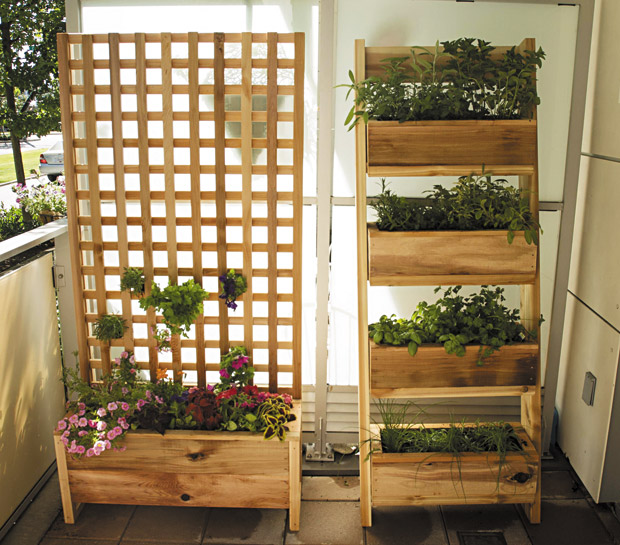New-age gardening takes you onward, upward
Generations of space-challenged gardener s have relied on raised beds and planting boxes to grow a harvest of vegetables, fruits and herbs — even in the tightest spaces. Vertical gardening gave us a whole new way to garden in tight spots, by encouraging plants to grow up, rather than spread out.
Now, by marrying the two techniques, you can create a visually stunning, artistic display of gardening prowess that will keep your table full of fresh produce throughout the summer.
Building the foundation
A well-built, durable planting foundation, such as a raised bed or planting box made from Western Red Cedar, is an essential starting point. Decide where yours will go and start building. You can find free project plans online to help you build the frame for a raised bed or a planting box.
Whatever style of planter you build, it’s important to choose a quality construction material. Western Red Cedar is often the choice of savvy gardeners because it’s naturally rot-resistant as well as durable and easy to work with.
It needs no chemical finishes or paints to preserve or beautify it, and is harvested from sustainably managed forests. Learn more and find free project plans at Realcedar.com.
Simple steps onward and upward
Adding a simple trellis to your raised bed or planting box is an easy way to maximize your growing space. For example, you can plant shrub-type plants like peppers in a row in the front portion of the planter, then add a trellis in the back portion and encourage vining veggies like beans, peas and cucumbers to grow up the structure.
For larger raised beds, you can build a vineyard style pergola above the bed. A sturdy pergola made from Western Red Cedar can support a variety of substantial plants such as squash, but you don’t have to be limited to fruits and veggies that grow on vines.
Loftier ambitions
Is your raised bed nestled against a wall? Or perhaps your planting box perches on one side of your backyard deck. You can add a free-standing wall by building a cedar frame and stretching hex wire across the frame. Vines will readily climb the wire, but you also can attach terra cotta pots to the wire to hold herbs, small vegetables and even flowers.
In a variation on the trellis concept, you can build a framework with multiple rows of narrow cedar troughs above your raised bed or planting box; the troughs make a great growing spot for herbs. You also can create a stepped planter by building a series of boxes in graduated sizes and then stacking them atop each other widest to narrowest. Or, for a more modern look, build a contemporary ladder-style vertical garden with box-shaped removable planters.
This article is courtesy of Brandpoint.

